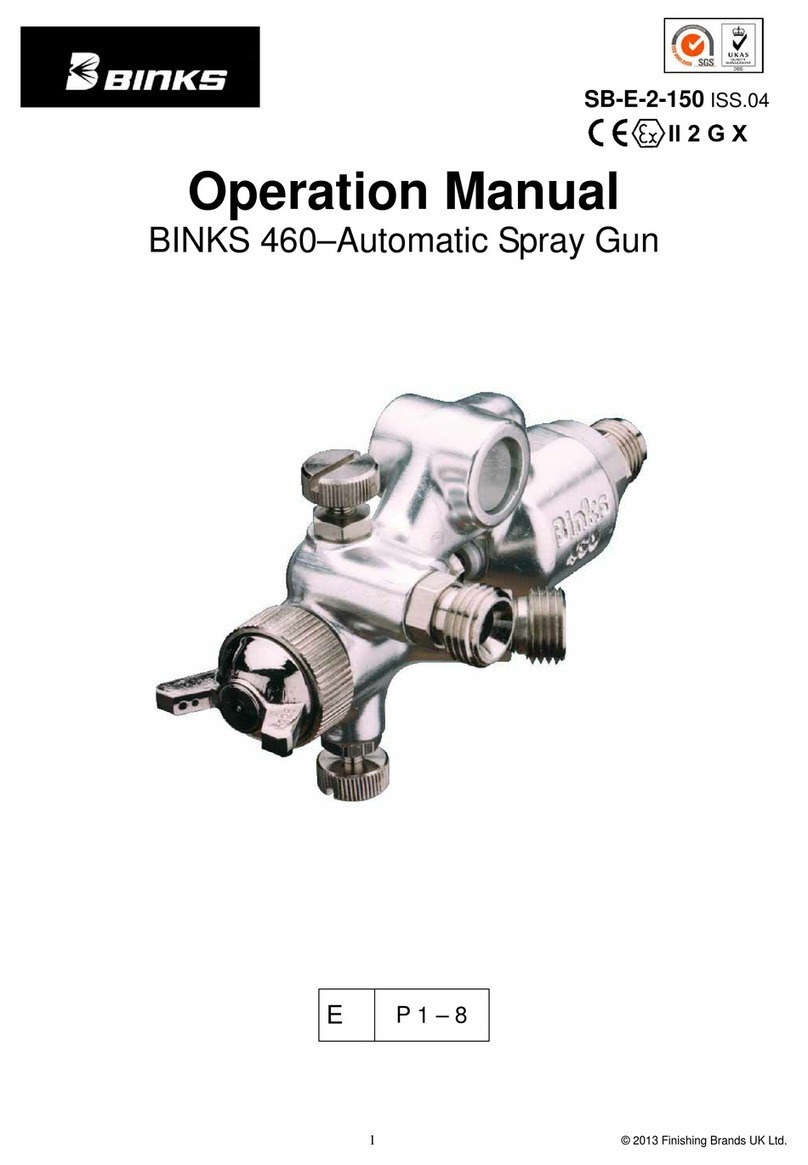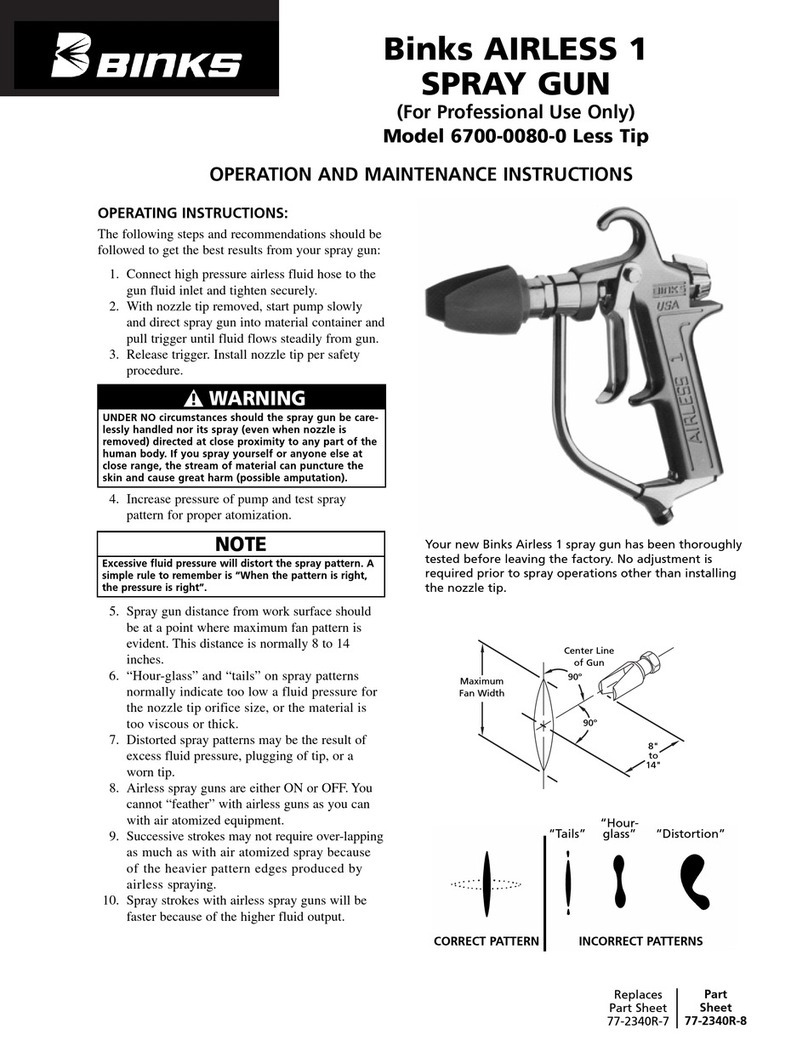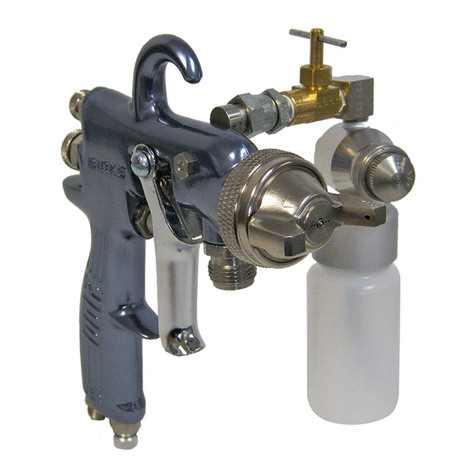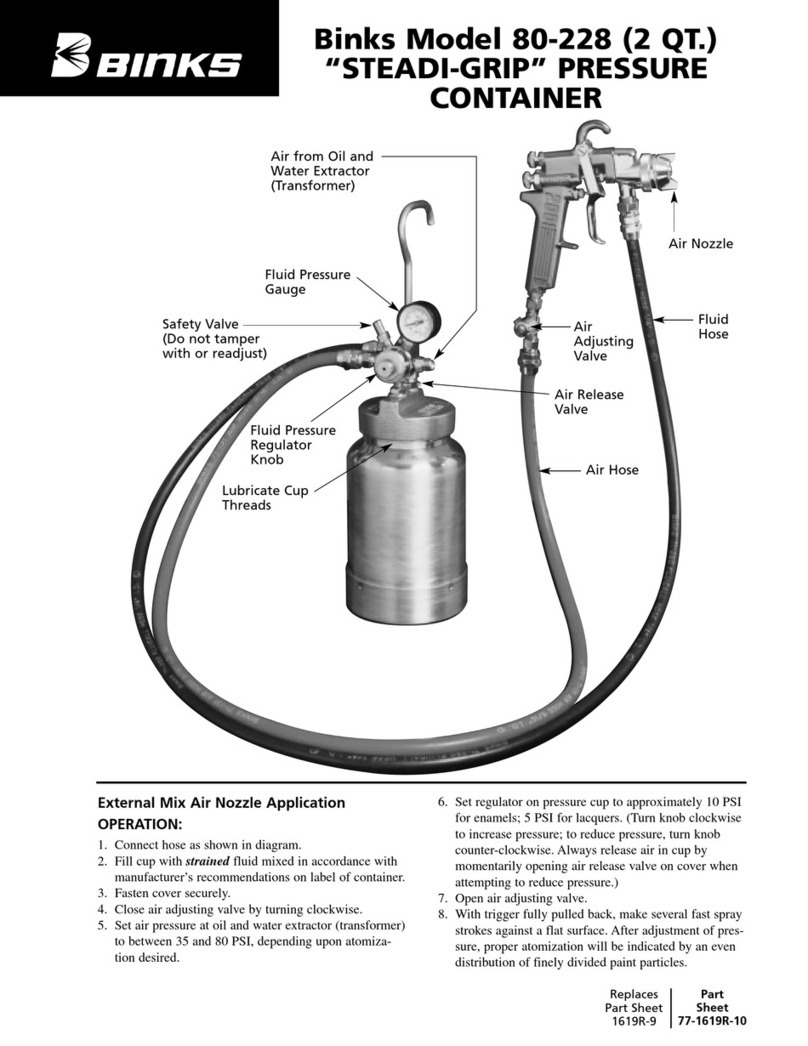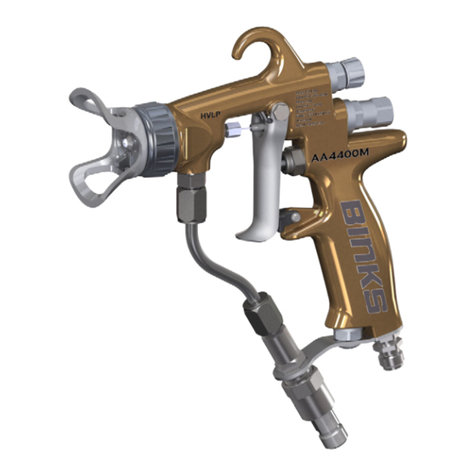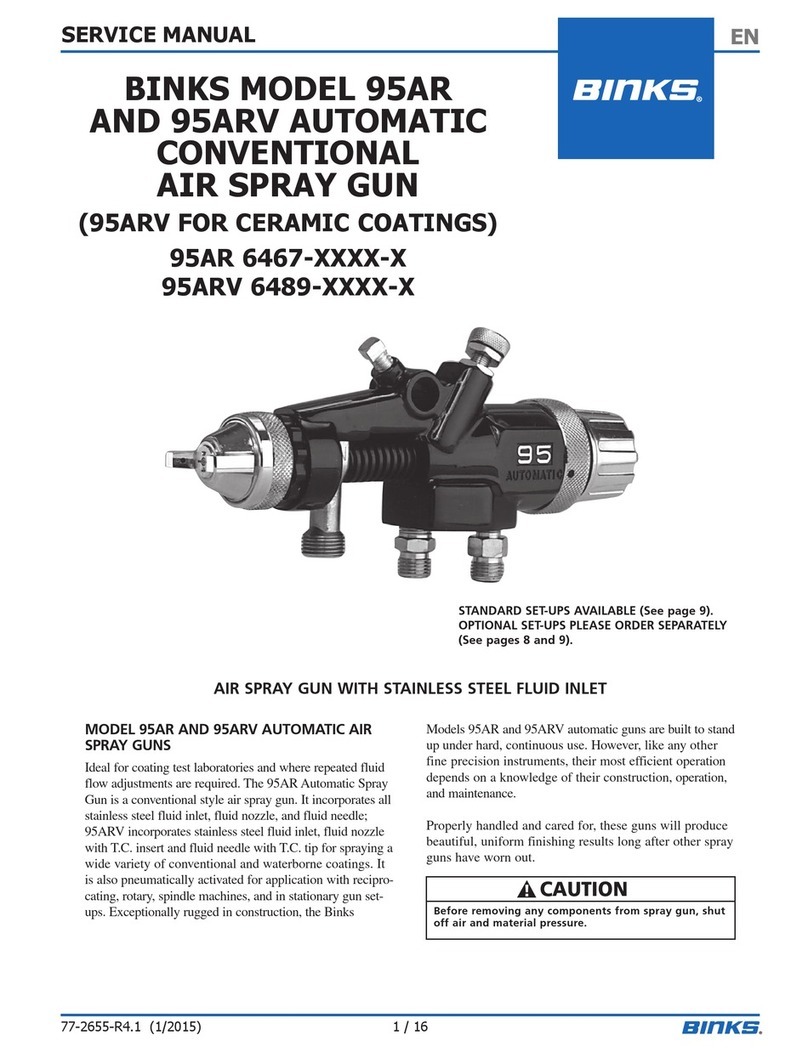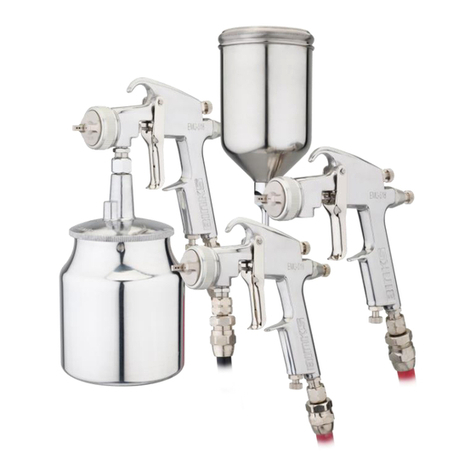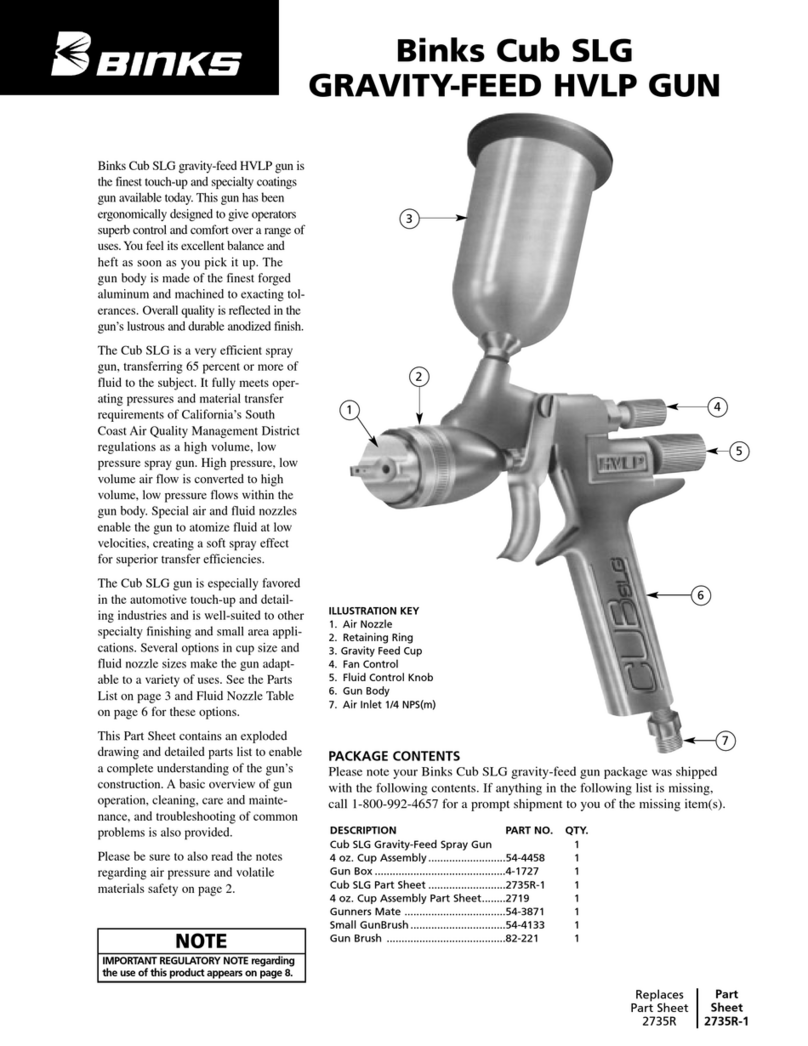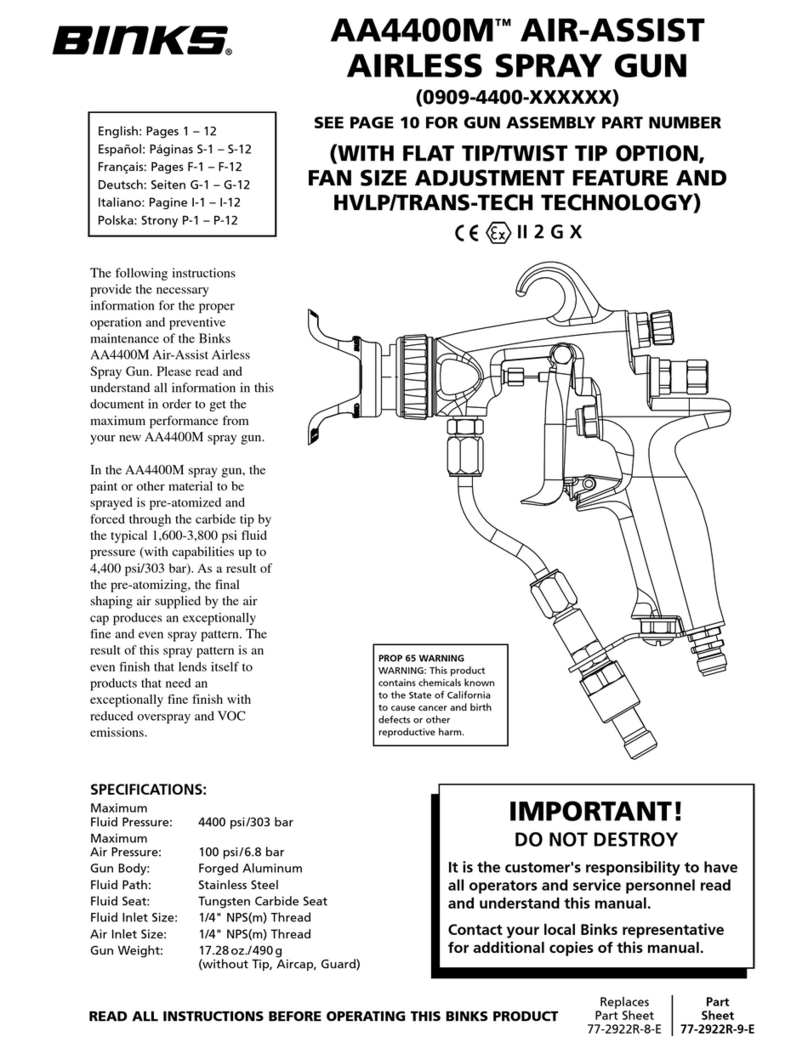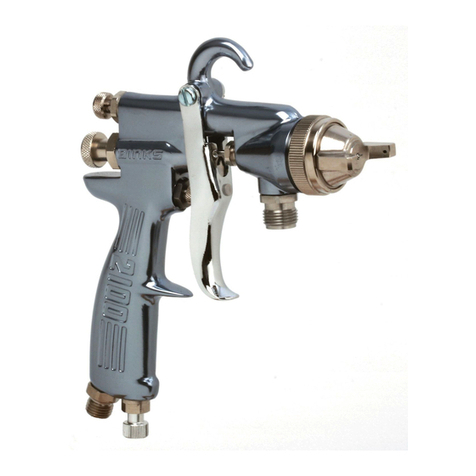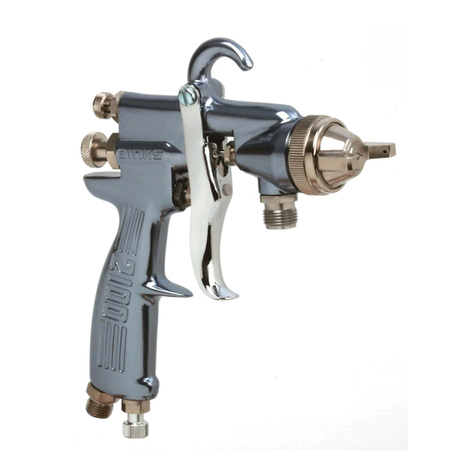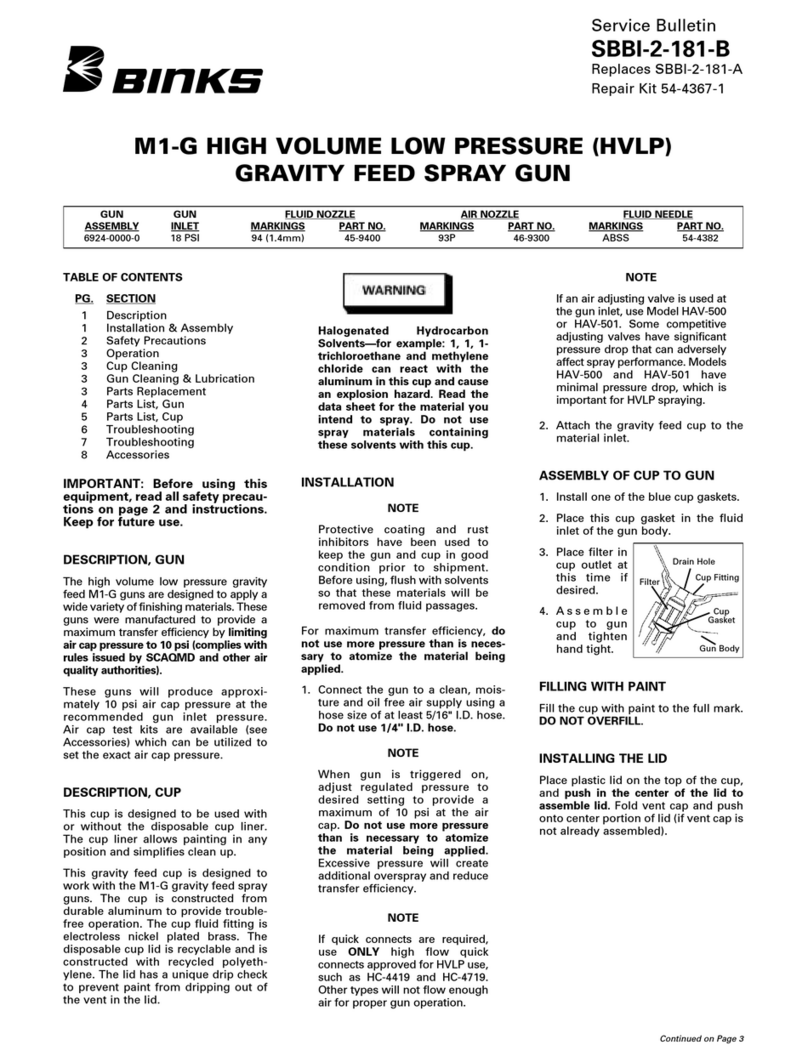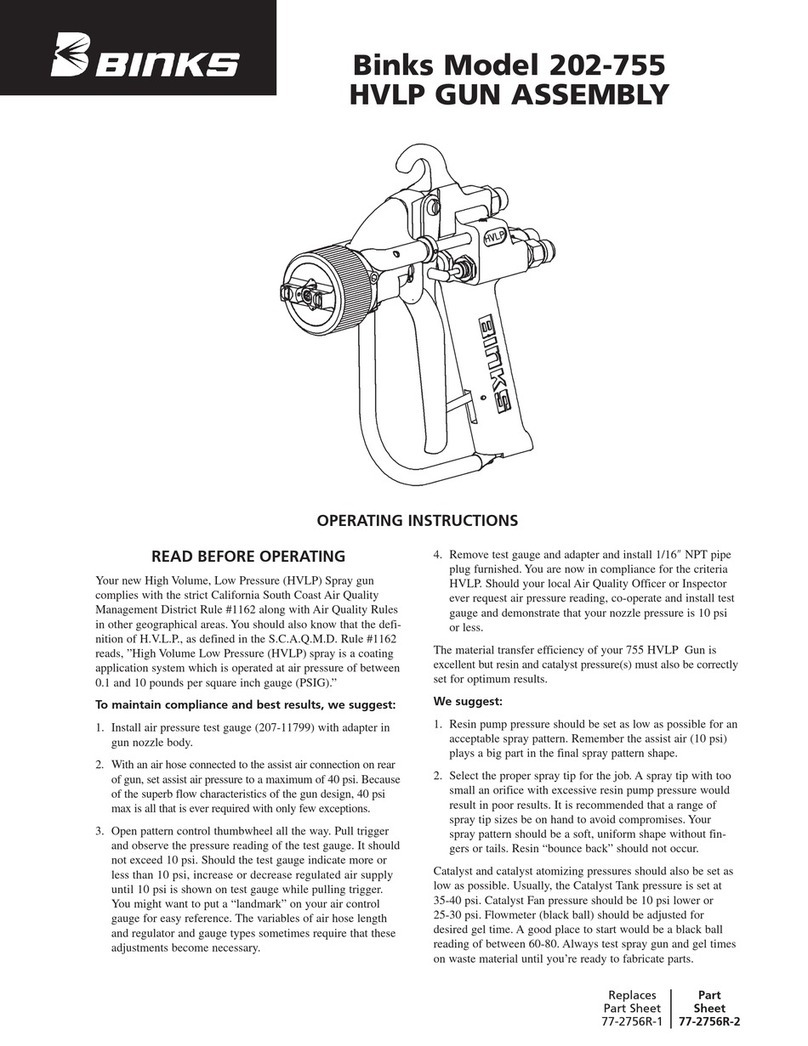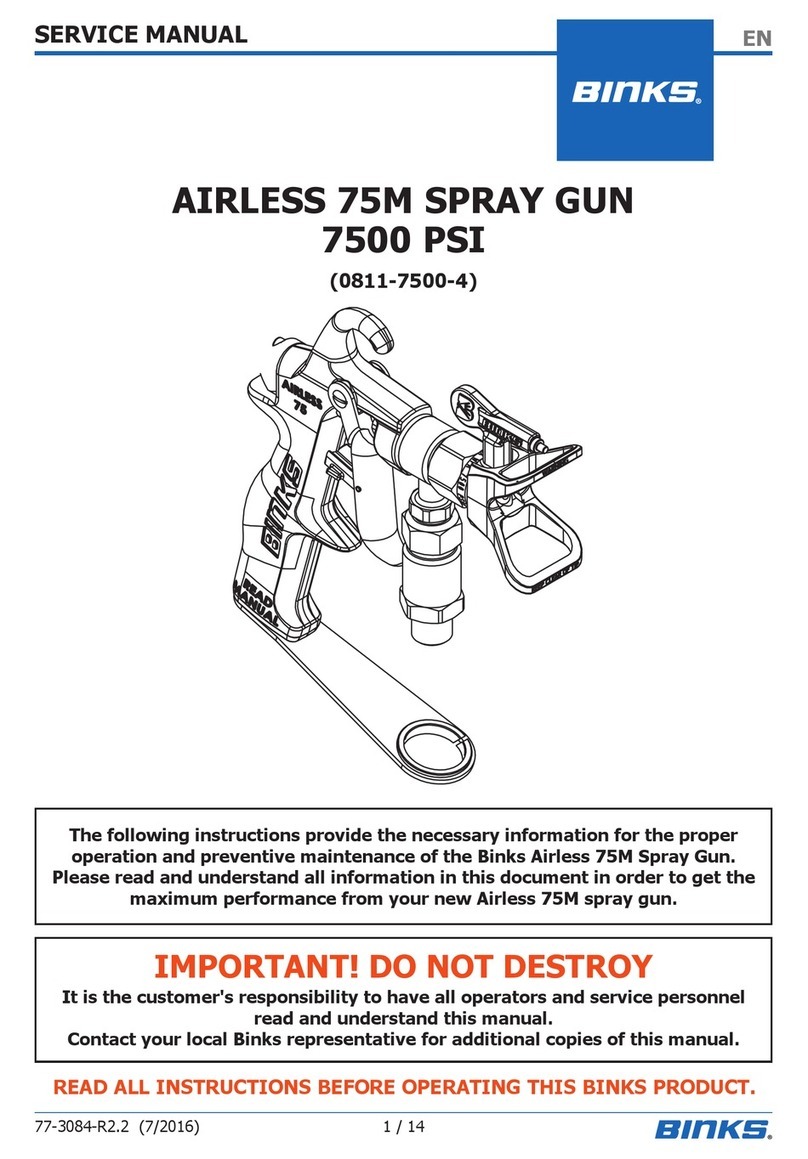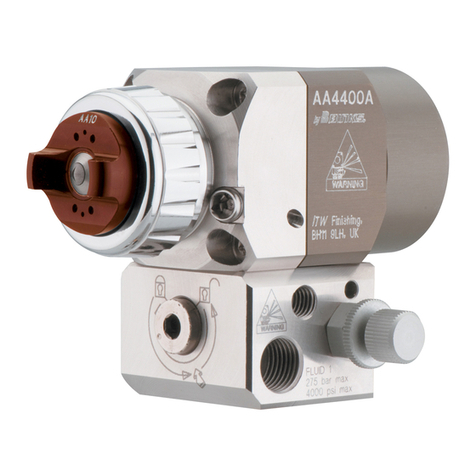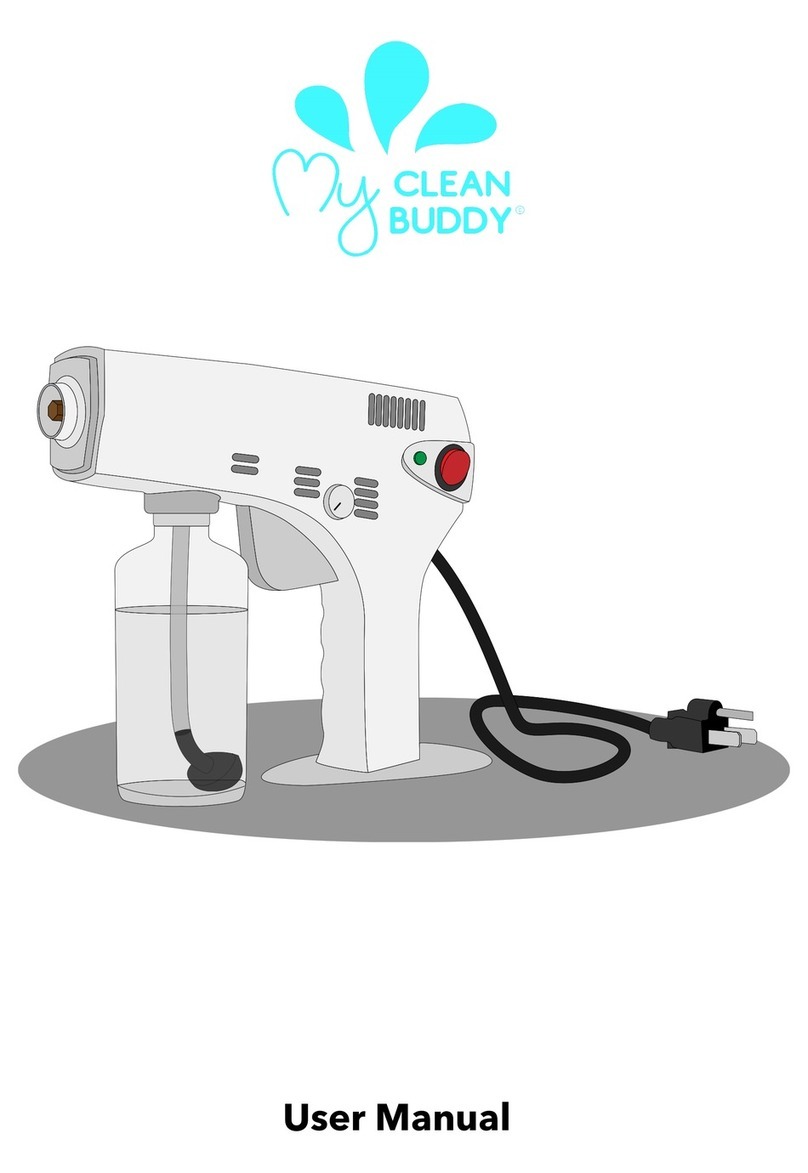3
OPERATION and MAINTENANCE INSTRUCTIONS for M1-G HVLP SPRAY GUN
SPRAY GUN CLEANING INSTRUCTIONS
In certain states, spraying solvents which contain Volatile
Organic Compounds (VOC) into the atmosphere when
cleaning a spray gun is now prohibited.
In order to comply with these new air quality laws Binks
recommends one of the following two methods to clean
your spray finishing equipment:
1. Spray solvent through the gun into a closed system.
An enclosed unit or spray gun cleaning station con-
denses solvent vapors back into liquid form which
prevents escape of VOC’s into the atmosphere.
2. Place spray gun in a washer type cleaner. This
system must totally enclose the spray gun, cups, noz-
zles and other parts during washing, rinsing and
draining cycles. This type of unit must be able to
flush solvent through the gun without releasing any
VOC vapors into the atmosphere.
Additionally, open containers for storage or disposal
of solvent or solvent-containing cloth or paper used for
surface preparation and clean-up may not be used.
Containers shall be nonabsorbent.
CLEANING GUN AND GRAVITY FEED CUP
Remove the cup cover and drain unused material from
cup. Carefully rinse cup with solvent. Place clean solvent
into the cup and spray this through the gun until it is clean.
Remove and clean the cup if necessary. Blow air through
the gun to dry it. (Refer to Service Bulletin SBBI-4-043 for
cleaning instructions when using cup liners.)
Your new M1-G HVLP Spray Gun is exceptionally rugged
in construction and is built to stand up under hard, continu-
ous use. However, like any other fine precision instrument,
its most efficient operation depends on a knowledge of its
construction, operation and maintenance. Properly handled
and cared for, it will produce beautiful, uniform finishing
results long after other spray guns have worn out.
IMPORTANT: Before removing any components from the
spray gun, shut off air pressure and drain material from the
paint cup.
SETUP FOR SPRAYING
CONNECTING GUN TO AIR HOSE
Air should be supplied by a suitable length of 5/16" diameter
air hose fitted with a 1/4 NPS(f) connection at gun end. For
hose lengths over 50', use 3/8" hose.
CONNECTING GRAVITY FEED CUP TO GUN
(Figure 1) Screw the cup into the spray gun fluid inlet. Fig. 1
OPERATING THE M1-G HVLP SPRAY GUN
CONTROLLING THE MATERIAL FLOW
Correct fluid nozzle size should be selected for proper
material flow rate. The material valve control knob (19)
may be used to restrict the material needle valve opening
and reduce the material flow as necessary.
CONTROLLING THE FAN SPRAY
The fan spray is controlled by means of the side port
control assembly (9). Turning this control clockwise until
it is closed will give a round spray. Turning it counter-
clockwise will widen the spray into a fan shape. The fan
spray can be turned anywhere through 360° by position-
ing the air cap (2) relative to the gun. To affect this,
loosen retainer ring, position nozzle, then tighten retainer
ring.
TROUBLE SHOOTING
FAULTY SPRAY
A faulty spray is often caused by improper cleaning,
resulting is dried materials around the material nozzle tip
or in the air nozzle. Soak these parts in thinners to soften
the dried material and remove with brush or cloth.
If either the air cap (2) or fluid nozzle (3) are damaged,
these parts must be replaced before perfect spray can be
obtained.
INTERMITTENT SPRAY
Fluttering spray is caused by either insufficient material
in the gravity feed cup or a clogged fluid passage. If the
fluid passage is clogged, drain material from the paint
cup and remove the cup and fluid nozzle. Clean the fluid
passage with solvent and reassemble.
Gravity Feed Cup
Air
Extractor
NOTE
All numbers in parentheses ( ) refer to item numbers in
Assembly Drawing on Page 6.
CAUTION
Never use metal instruments to clean the air or material
nozzles. These parts are carefully machined and any damage
to them will cause faulty spray.
!
